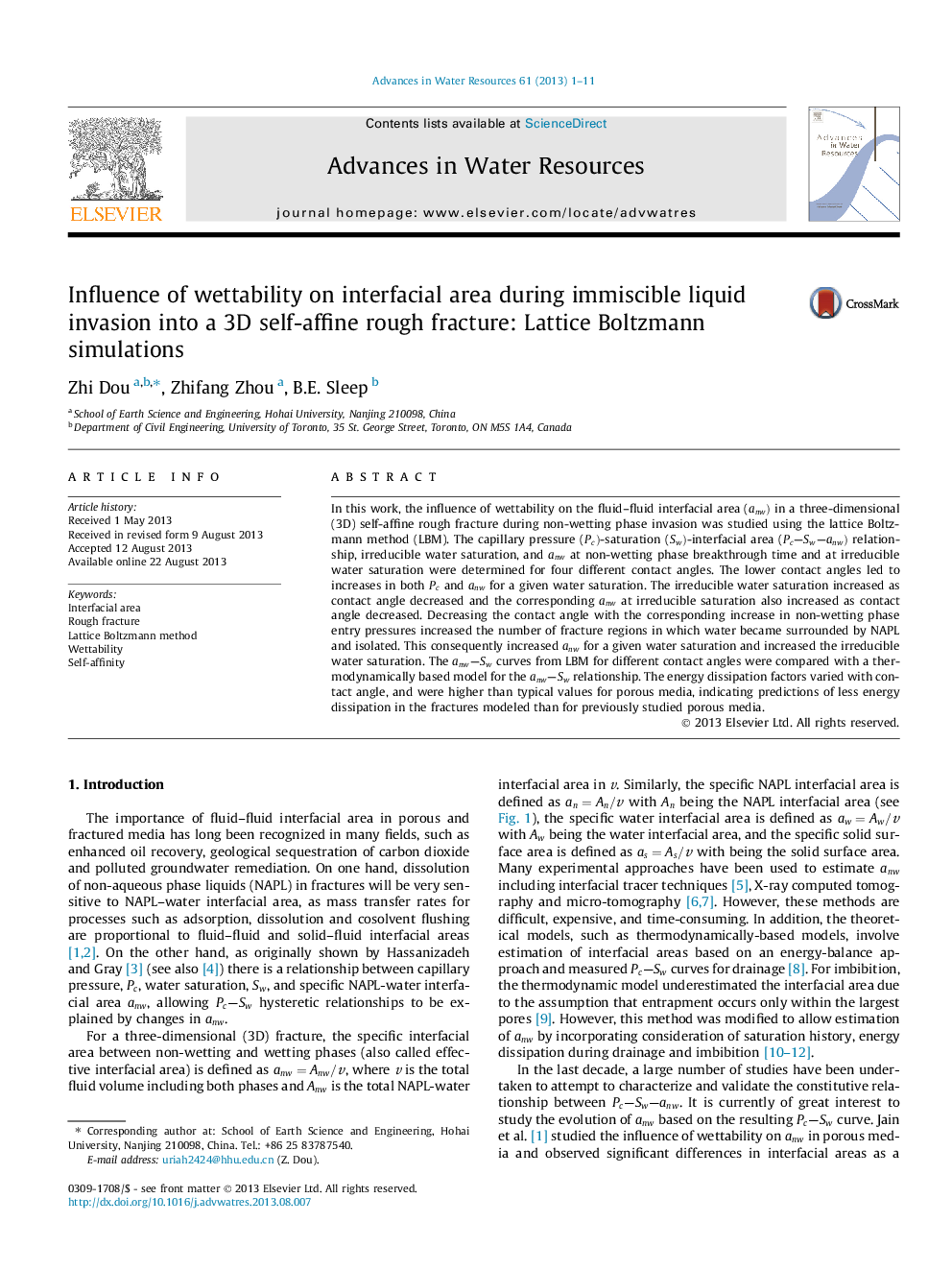| کد مقاله | کد نشریه | سال انتشار | مقاله انگلیسی | نسخه تمام متن |
|---|---|---|---|---|
| 4525563 | 1625647 | 2013 | 11 صفحه PDF | دانلود رایگان |

• The lower contact angles led to increases in both Pc and anw.
• The irreducible saturation increased as contact angle decreased.
• The non-wetting phase breakthrough time varied with contact angle.
• The energy dissipation factors varied with contact angle.
In this work, the influence of wettability on the fluid–fluid interfacial area (anw)anw) in a three-dimensional (3D) self-affine rough fracture during non-wetting phase invasion was studied using the lattice Boltzmann method (LBM). The capillary pressure (Pc)Pc)-saturation (Sw)Sw)-interfacial area (Pc–Sw–anw)Pc–Sw–anw) relationship, irreducible water saturation, and anwanw at non-wetting phase breakthrough time and at irreducible water saturation were determined for four different contact angles. The lower contact angles led to increases in both PcPc and anwanw for a given water saturation. The irreducible water saturation increased as contact angle decreased and the corresponding anwanw at irreducible saturation also increased as contact angle decreased. Decreasing the contact angle with the corresponding increase in non-wetting phase entry pressures increased the number of fracture regions in which water became surrounded by NAPL and isolated. This consequently increased anwanw for a given water saturation and increased the irreducible water saturation. The anw–Swanw–Sw curves from LBM for different contact angles were compared with a thermodynamically based model for the anw–Swanw–Sw relationship. The energy dissipation factors varied with contact angle, and were higher than typical values for porous media, indicating predictions of less energy dissipation in the fractures modeled than for previously studied porous media.
Figure optionsDownload as PowerPoint slide
Journal: Advances in Water Resources - Volume 61, November 2013, Pages 1–11